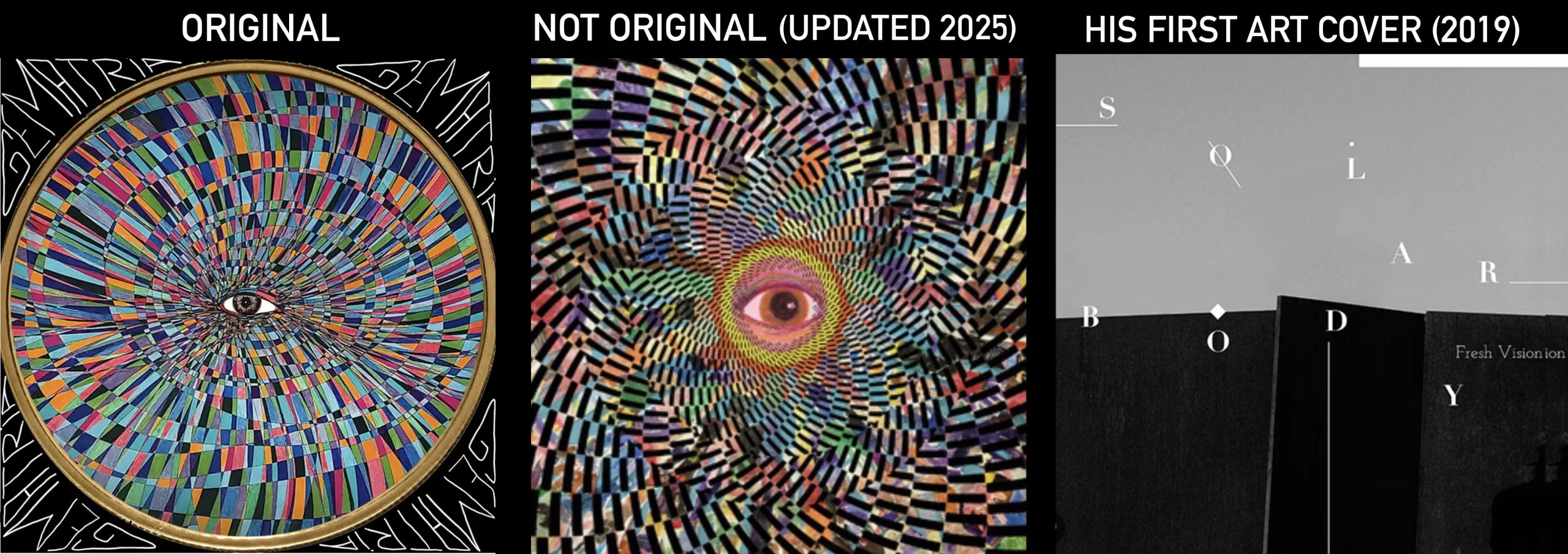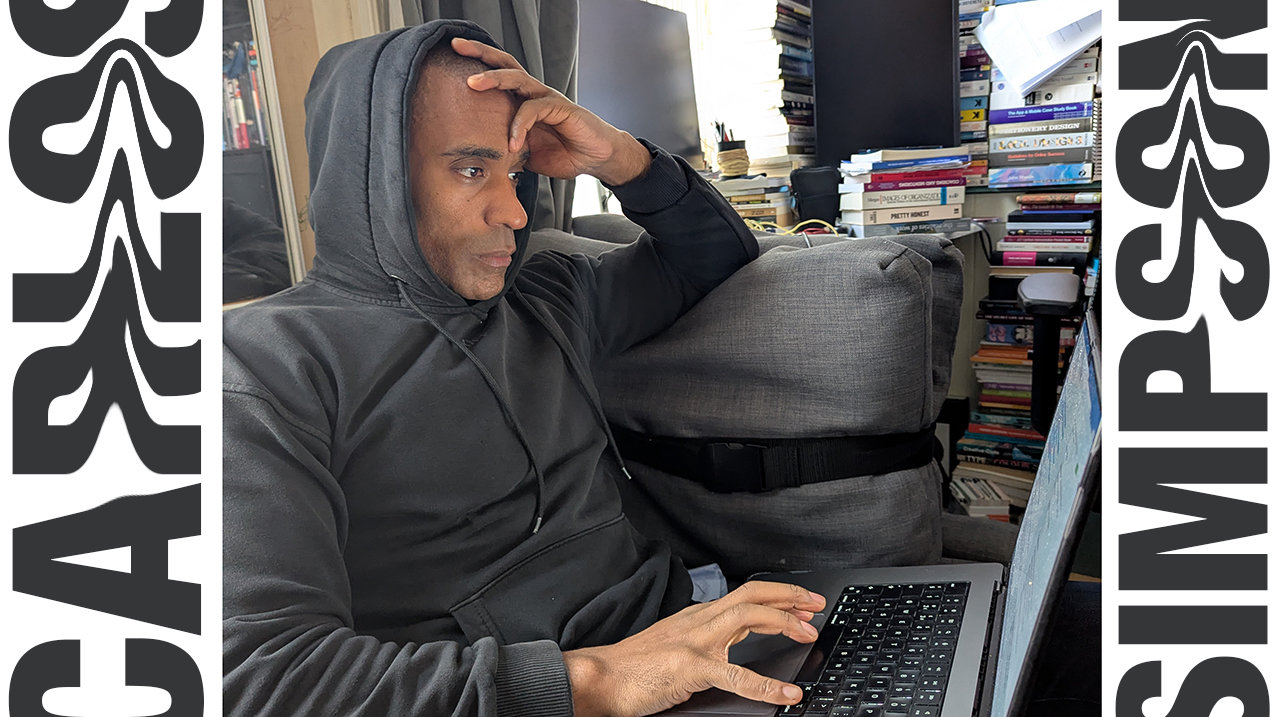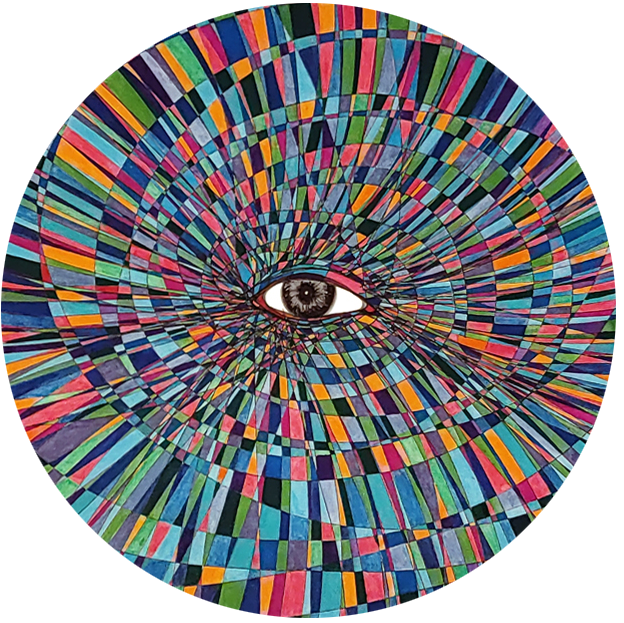Thank you for reading this post, don't forget to subscribe!
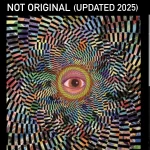
The image labelled “NOT ORIGINAL” is not original when compared to Carlos Simpson’s “ORIGINAL” artwork for several key reasons:
1. Stylistic Authenticity vs. Mimicry
Carlos Simpson’s original work (left) demonstrates a deliberate, hand-rendered precision using uniquely arranged geometric segments, carefully layered colours, and a spiritually symbolic composition centred around the eye, framed by the sacred geometry of “Gematria.” The patterns flow with calculated rhythm and symbolic coherence.
By contrast, the “Not Original” image (right) mimics this layout superficially using digital distortion techniques. The segments spiral in a randomised, algorithmic fashion, lacking the intentionality and conceptual depth of Simpson’s original work. The pixelated, uneven patterning suggests the use of a digital filter or visual effect rather than a genuine artistic process.
2. Conceptual Integrity vs. Surface Imitation
Simpson’s original integrates symbolism evident in the title Gematria, the precise radial symmetry, and the eye’s placement as a central consciousness motif. It invites metaphysical interpretations rooted in numerology and ancient codes.
The “Not Original” version appears to appropriate the spiral-eye format for aesthetic impact alone. It lacks contextual meaning, philosophical structure, or visual narrative beyond the borrowed concept of “eye-in-the-spiral.” It imitates the look without understanding the why.
3. Technique and Medium
The original was executed in mixed traditional media: paint, pen, and precise color layering exhibiting tactile nuance and artistic discipline.
The “Not Original” appears to be computer-generated or digitally altered: irregular texture, excessive repetition, low-resolution visual noise, and the absence of painterly technique suggest it’s a manipulated copy or graphic effect, not handcrafted art, perhaps a digital collage of three different images superimposed in layers.
4. Intentional Misappropriation
Both pieces share a centered eye surrounded by vibrant, radiating color tiles, but the right-hand image is clearly a derivative that tries to evoke the same visual power without the originality, symbolism, or manual craftsmanship. This is a case of visual plagiarism where the concept and composition are copied without permission or credit.
Conclusion
Carlos Simpson’s work is rooted in a unique visual philosophy infused with symbolism, geometry, and conceptual meaning. The “Not Original” version is a mimic that borrows aesthetic elements without authorship, purpose, or artistic lineage. It is style theft, stripped of spirit. Recognising the difference requires not just visual comparison but also understanding the intention and authenticity behind the art.
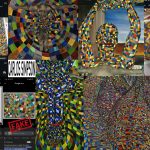
This image collage presents a powerful visual statement about authorship, originality, and artistic integrity. The centre and top portions of the collage are original artworks by Carlos Simpson, known for his distinct and highly recognisable aesthetic: figures intricately wrapped in vivid, multicolored geometric patterns. The works are rooted in a deeply philosophical visual language, exploring identity, perception, and digital metamorphosis.
However, the bottom section of the image reveals a concerning trend: the appearance of imitation works, visually similar in motif and style, misattributed or falsely claimed under other names, as flagged by the bold “FAKE” labels. The misuse of Google Lens results further highlights how algorithms can erroneously credit derivative work to unrelated creators, perpetuating misinformation and undermining artistic authenticity.
What makes Simpson’s style so unique is not just the technical execution of colourful checkered patterns but the conceptual depth behind each piece, interrogating the modern human condition through abstraction, texture, and coded symbolism. Attempts to replicate the surface elements of this style miss the emotional and philosophical rigour embedded in the original works.
The image serves both as documentation and as a quiet protest, an assertion of authorship in the face of digital appropriation. It urges viewers to critically question the source, recognise artistic lineage, and honour the vision that underpins true originality. In doing so, it calls attention not only to the protection of artistic identity but also to the cultural and ethical importance of crediting ideas where they originate.


